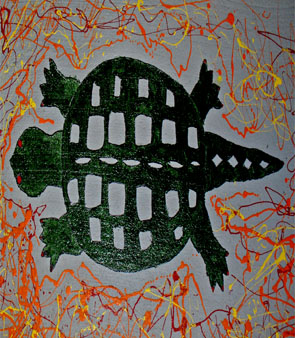This piece was reprinted by OpEd News with permission or license. It may not be reproduced in any form without permission or license from the source.
In 1975, I drove a car from Germany to Kathmandu, Nepal's capital that sits in a bowl-shaped plateau, created by a comet that struck the Himalayans. Clear air, gold temples; Mount Everest a trek away, and China to the north; it is a different world, but not paradise. Today, Nepal is the poorest country in South Asia and ranks twelfth poorest in the world, with an average GDP (money actually spent) per capita of $1,100, compared to the United State's $47,000. A third of Nepal's people live below the poverty range. The country remains divided by an entrenched caste system with an educated, wealthy elite owning most of the land and little opportunity available to peasants.
Ruled by a monarch since 1768, Nepal has suddenly become the world's youngest republic. A decade-long People's Revolution, by the Maoist Party, led to more than 12,000 deaths. On June 1, 2001, the king, queen, and crown prince were killed in a massacre/suicide at the royal palace, that established the king's brother, Gyanendra, as monarch, until he dismissed parliament in 2005, and established martial law, with the appointment of former prime minister, Kirti Nidhi Bista, as vice chairman (a man who requested my presence, after a knock at my door, one dark night in Kathmandu).
With the people's uprising in 2006, King Gyanendra's government collapsed, and eventually, on May 28, 2008, the Republic of Nepal was formed, with the election of Nepal's first president and head of the coalition Maoist Government. The 240 year old monarchy was over. Nepal was declared a secular state, its time-honored official status as a Hindu kingdom abolished. Just in the last weeks, however, the Maoist-led government was toppled, and another coalition government was formed. Things are, once again, in flux.
From my perspective as a callow western observer in 1975, however, Nepal seemed stable, and the people earthy and vibrant. In spite of the 73-75 USA Recession (the most severe since WWII), I was lucky enough to find a logging job in Alaska, save $4,000 in a few months, fly to Europe, buy a car, and drive to Kathmandu. Today's depression and world disdain for American policy, I imagine, makes it harder for today's traveler. Back then, one could bumble around just about everywhere. I remember parts of Nepal vividly. Cultural differences were striking; poverty was not as pronounced as India, but it existed; like the fellow above, for example, that I found by a Hindu temple, a follower of detached aesthetics. The red shirt seems to be the only indulgence, a color known for spiritually intense auras. The pilgrim seems oblivious to the world, with possessions in easy reach-shoes, begging bowl, and bag for pillow. Fairly muscular and lean, he is obviously hardy-mornings and evenings in Kathmandu are cold, but by his hair, I cannot be sure if he is not a westerner, maybe some delusional trekker.Â
I saw a coterie of holy men:Â Sufis, Buddhists, and Sadhus, including one Samedi-like soul standing naked outside a bank window, a wool blanket over his shoulders, and ding dong hanging out. Passer bys paid not a whit of attention. Throwing off worldly attachment can leave one in an alternate reality, one not conducive to capital acquisition, nor long term investment. The man on the bricks seems like some marooned soul, washed up on a beach, unworthy of community concern, maybe even shunned by those more fortunate.
Â
In the US, today, people may be approaching a similar state, losing homes and livelihood, and qualifying as veritable "untouchables" by our health care industry, since they cannot generate profits for providers; This is the gist of the Republican Health Plan, a Conservative Caste System, apparently, and this poor fellow would surely be a poster child for individuals unworthy of full coverage, or health insurance at all. Begging bowl, nirvana, or not, he could never raise, much less levitate, a monthly premium. Americans spend $6,714 per capita on health, more than twice the average of industrialized countries, but money is not everything. The US today places 37th in world ranking, behind nations like Morocco, Cyprus, and Costa Rica, but way ahead of Nepal where the figure spent is more like five dollars per person. If this fellow needed to see a doctor, and had to pay out of pocket, he would fail; he has no pockets.
Of course, there are alternative approaches and remedies: burning candles in Hindu temples, for example:
Kathmandu is famous for the design and splendor of its more than 2,700 temples and religious shrines. Surely, the many Vedic Gods offer supplication for the suffering.
Or music from a mysterious-looking Minstrel
(Note: You can view every article as one long page if you sign up as an Advocate Member, or higher).






